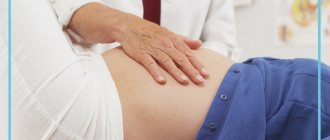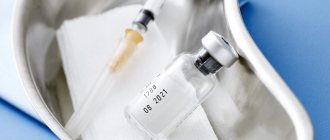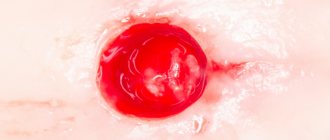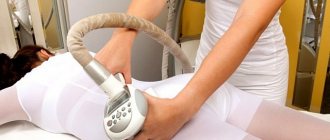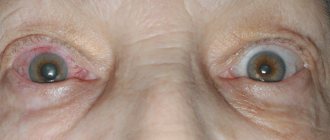The safety of cosmetic procedures in pregnant or breastfeeding patients is surrounded by uncertainty. Pregnant women make up a significant proportion of patients who undergo cosmetic procedures because they often experience reversible and sometimes irreversible cosmetic changes during pregnancy.
Dermatologists and other physicians often delay cosmetic procedures until the postpartum period due to a lack of controlled data.
In the Russian Federation, many obstetrician-gynecologists, fortunately not all, equate pregnancy with some form of illness, limiting most of the usual activities and frightening patients with “dangerous periods” that simply must be survived. Many people have forgotten that pregnancy is a physiological state for a woman.
Why in the 21st century are pregnant women still not allowed to cut their hair, do hair removal, or visit a cosmetologist?
Below we present excerpts from an extensive scientific study by Trivedi, MK et al. A review of the safety of cosmetic procedures during pregnancy and lactation. International Journal of Women's Dermatology, Volume 3, Issue 1, 6 – 10
, who summarized data on the safety of cosmetic procedures during pregnancy and lactation.
Scientists conducted a systematic review of the scientific literature using the PubMed database, looking at articles about cosmetic procedures during pregnancy and lactation. Since controlled trial data were not available, the researchers also used case studies.
The purpose of the study was to collect the evidence base to make specific recommendations on the safety of cosmetic therapy during pregnancy and lactation.
Preliminary data suggested excellent safety profiles for many commonly performed cosmetic procedures.
General principles of treatment of skin diseases in pregnant women
- Before prescribing a drug, I clarify whether it can be used during pregnancy.
- Before starting treatment, especially in early pregnancy, I assess the risk of side effects.
- I plan the treatment in such a way as to avoid side effects of the drugs.
- I do not prescribe drugs that have a sensitizing or irritating effect.
Drug safety categories during pregnancy (FDA)
- Category A (the safest drugs for pregnant women). Safety information comes from large studies. No risk to the fetus has been identified in the first trimester of pregnancy, and there is no evidence of a risk in the future.
- Category B (best choice for treating pregnant women). The experiment did not reveal any evidence of adverse effects; clinical studies were not conducted, but safety was proven.
- Category C (use with caution during pregnancy). During the experiment, side effects were identified, but clinical studies were not conducted, and the potential benefit of using the drug may outweigh the risk.
- Category D (dangerous during pregnancy). Side effects in humans have been proven, and use is possible only for the purpose of preserving the life of the mother in a life-threatening situation.
- Category X (drugs are not recommended for use in pregnant women). Teratogenic effect has been proven.
Critical periods
- I (2nd – the metabolism of the embryo increases) – there is a high danger of both the teratogenic effects of the drug and the death of the embryo with subsequent miscarriage.
- II (3rd–8th – period of organogenesis) – danger of toxic and teratogenic effects of drugs with the possible development of defects, as well as fetal death.
- III (18th–22nd) – the period of formation of neuroorgan connections, endocrine glands, the most significant changes in the bioelectrical activity of the brain, peripheral nervous system: there is a high risk of developing a teratogenic effect of drugs and a defect in the structure and function of any organs.
Local and topical drugs
Injectable anesthetics
The main concerns with the use of injectable anesthetics are the potential for placental transfer and teratogenicity (Richards and Stasko, 2002)
. Heinonen et al. (1977) demonstrated the relative safety of lidocaine, benzocaine, propoxycaine, and tetracaine during the first trimester of pregnancy in a study that reported no increase in the incidence of birth abnormalities in 293 women.
In 1998, Moore conducted a large study of local anesthetics in pregnant women. The results of this study classified bupivacaine and mepivacaine as Category C drugs due to problems with fetal bradycardia and preterm birth with mepivacaine (Moore, 1998, Richards and Stasko, 2002)
.
However, exposure to mepivacaine during the first trimester doubled the risk of congenital anomalies compared with controls (Heinonen et al., 1977)
.
Hagai et al. (2015) assessed the extent of abnormalities in a 6-year comparative study of 210 patients who were exposed to dental local anesthetics during the first trimester of pregnancy. The incidence of major congenital malformations in the patient group was 4.8% versus 3.3% in the control group (794 patients), but the difference was not statistically significant (Hagai et al., 2015)
.
Judicious use of lidocaine with epinephrine and topical prilocaine/lidocaine is safe in pregnant patients.
Lidocaine is a Category B drug with a long history of safe use during pregnancy (Kuhnert et al., 1979, Kuhnert et al., 1986)
.
The main concerns with the use of lidocaine during pregnancy are inadvertent arterial injection and the use of high doses, as these two factors may relate to an increased risk of toxicity to the cardiac and central nervous system of the fetus. Although lidocaine is found in fillers and is used in many dermatologic procedures, the doses used are much lower than the recommended maximum subcutaneous dose of 4.5 mg/kg or 300 mg in the United States (Lee et al., 2013)
.
Fayans et al. (2010) noted that the use of a vasoconstrictor may reduce the toxicity of local anesthetics. Concern arises because of the serious risk of uterine artery spasm with the administration of increased doses of epinephrine. However, the doses used in dermatological surgeries are relatively low and have not been associated with this side effect (Richards and Stasko, 2002)
.
The most common topical agents used during dermatologic procedures include benzocaine, tetracaine, and lidocaine 2.5%/prilocaine 2.5% cream. Benzocaine has been labeled as a Category C drug due to the risk of methemoglobinemia in the infant. This is supported by a study of 242 cases of methemoglobinemia that were associated with the use of local anesthetic (Guay, 2009, Lee et al., 2013)
.
Methemoglobinemia is also a concern when using high doses of prilocaine. However, 2.5% lidocaine or prilocaine is considered safe but should be avoided in the eye area as both agents are classified as pregnancy category B drugs (Lee et al., 2013)
.
Tetracaine is classified as a Category C drug but is the preferred local anesthetic for periocular procedures and eyelids due to its lower risk of corneal irritation (Lee et al., 2013)
.
At what stages of pregnancy can laser hair removal be done?
Laser hair removal during pregnancy is not strictly prohibited, but it can only be done in certain areas and within strictly defined periods. Before the procedure, it is necessary to consult a specialist and exclude contraindications.
Laser hair removal during early pregnancy
Laser hair removal during early pregnancy (from 1 to 13 weeks) is absolutely contraindicated. It is during this period that the active formation and formation of vital organs and systems of the unborn child occurs, so any external influence can cause serious disorders and pathologies.
From the second trimester, when the woman’s body condition has stabilized and the risks of complications for the fetus are minimal, laser hair removal can be used if necessary.
Minor dermatological procedures
The most common minor procedures include removal of skin papillomas by excision, resection or cryotherapy, removal of other benign lesions such as seborrheic keratosis and dermatosis papulosa nigra, excision or removal of nevus, and removal of hemangiomas by electrocautery or radiation surgery. These procedures have a long history of safety in pregnant patients.
Permanent hair removal using laser therapy or electrolysis is generally not recommended during pregnancy due to a lack of safety data. There is a theoretical problem with electrolysis because amniotic fluid is a conductor of galvanic current. Patients are advised to correct excess hair growth using waxing, shaving and depilatory creams during pregnancy.
What might a pregnant woman encounter?
In any case, before performing mesotherapy, you should consult your doctor. This way you can protect yourself and your child by preventing serious complications.
And when performing the procedure, be prepared for the following consequences:
- Allergy. Even hypoallergenic ingredients can cause a serious reaction during pregnancy. It will be reflected in the form of itching, burning, irritation and other local problems.
- Introduction of infection into the body. When creating many punctures in the treated area, there is a high probability of infection, which will lead to inflammatory processes in the dermis.
- Failure of the body to accept the meso cocktail. Because of this, the effectiveness of the technique is significantly reduced.
- Prolonged healing of the skin, the occurrence of papules and other side effects.
- Pain during the procedure. A decrease in the pain threshold is quite common, especially in the last months of pregnancy.
To reduce the risk of undesirable consequences, it is recommended to give preference to the home method of administering meso-cocktails - using a mesoscooter. The small unit makes massage, gentle movements that do not greatly damage the skin. Thanks to it, you can also achieve the desired result, but more safely.
Chemical peeling
The most common chemical peels include glycolic acid, lactic acid, salicylic acid, trichloroacetic acid, and Jessner peels.
Glycolic acid
Glycolic acid peels at concentrations ranging from 30% to 70% cause epidermolysis and desquamation (Fabbrocini et al., 2009)
.
Although safety data are limited, these peels are generally considered safe due to low skin penetration (Andersen, 1998)
.
Lactic acid
Lactic acid induces keratolysis. Lactic acid 2% has been used to treat acne without risk to the fetus and has shown negligible skin penetration.
The use of peels is generally indicated during pregnancy; only peels with salicylic and trichloroacetic acids should be used with caution.
Salicylic acid
Salicylic acid, which is classified as a Category C drug, is a beta-hydroxy acid with comedolytic and keratolytic activity (Fabbrocini et al., 2009)
.
This acid can have significant skin penetration of up to 25% when large areas are treated or when applied to occlusion (Lee et al., 2013)
.
However, no significant effects on fetal health were noted among pregnant patients when the procedure was combined with low-dose aspirin (Bozzo et al., 2011, James et al., 2008)
.
It is recommended to use salicylic acid on limited areas of the skin during pregnancy.
Other peelings
Jessner peel is a combination of resorcinol, salicylic acid and lactic acid.
There is a paucity of reports regarding the safety of Jessner peels during pregnancy. Since it contains salicylic acid, it should be used with caution due to the risks mentioned earlier.
Trichloroacetic acid (TCA) should also be used with caution due to possible skin penetration, as this agent can be absorbed through ocular and oral mucosal surfaces (Lee et al., 2013)
.
Zhou et al. (2012) noted high levels of TCA in maternal urine and low birth weight of the infant in a group of 398 women, suggesting that this compound may contribute to reduced fetal growth. However, TCA is used safely to treat genital warts in pregnant patients (Lee et al., 2013, Schwartz et al., 1988)
.
Medical pedicure.
Carrying a child greatly affects a woman's immune system. Therefore, her risk of contracting a fungal infection of the feet increases. In order to safely cope with this problem, SM-Cosmetology specialists recommend undergoing a medical pedicure for pregnant women.
The main goal of this procedure is to ensure the health of the nails and skin of the feet, eliminating the need for the woman to take oral antifungal agents, and not only to give the feet an aesthetic appearance.
Moreover, in our clinic, medical pedicures during pregnancy are performed not by a cosmetologist, but by a doctor of a rare specialty - a podiatrist. The result of this procedure will be clear skin on the feet, as well as the elimination of disorders that increase the already increased load on the feet of the expectant mother.
Neuromodulators
Botulinum toxin type A has both cosmetic and medical indications (Tan et al., 2013)
.
Recent evidence suggests, but does not fully confirm, that the toxin does not reach significant concentrations in the body if administered intramuscularly or intradermally. In addition, the size of the toxin molecule makes it unlikely to cross the placental barrier (Tan et al., 2013)
.
There are no clinical studies of the effects of botulinum toxin on pregnant women. However, there are a number of case reports where the toxin has been used for various medical procedures in pregnant patients without adverse fetal outcomes. Two recent studies have demonstrated the safety of botulinum toxin A for the treatment of achalasia in pregnant women. Hooft et al. (2015) reported the administration of an intrasynthetic injection of botulinum toxin A at 14 weeks of gestation without adverse effects on the fetus. Wataganara et al. (2009) reported a similar case where botulinum toxin A was administered at 33 weeks of gestation to treat persistent achalasia. No adverse fetal outcomes were noted and no evidence of infantile neuromuscular blockade was noted 5 days postpartum (Wataganara et al., 2009)
.
Most likely, I don’t use BTA; these may be random variations, although some types of BTA have now received approval for use during pregnancy. Sokolova Elena Viktorovna
Botulinum toxin A has been used safely in pregnant patients, as demonstrated by numerous reports and case series.
Robinson and Grogan (2014)
reported the safe administration of botulinum toxin A during 18 weeks of pregnancy for the treatment of migraine in a woman with refractory migraine.
Bodkin et al (2005) reported two cases of accidental administration of botulinum toxin A during the first trimester of pregnancy in patients being treated for cervical dystonia. One patient with a history of miscarriages miscarried at 10 weeks and was experiencing a twin pregnancy at this time (Bodkin et al., 2005).
.
Newman et al. (2004) reported the case of a woman with severe cervical dystonia who was treated with botulinum toxin injection during four consecutive pregnancies. No complications were reported (Newman et al., 2004)
.
Two cases of cosmetic use of botulinum toxin were reported by Oliveira Monteiro (2006) in two women at 6 and 5 weeks of gestation without adverse effects on the fetus.
A 2006 survey of 900 physicians by Morgan et al. (2006) found that 12 physicians had experience inadvertently injecting botulinum toxin into 16 pregnant patients. Only one patient with a history of spontaneous abortion had a miscarriage after botulinum toxin injection (Morgan et al., 2006)
.
There is concern that high doses (>600 U) of botulinum toxin are associated with systemic weakness (Lee et al., 2013)
. However, doses used in cosmetic procedures are typically less than 100 units.
Although the above cases demonstrate the general safety of botulinum toxin A, there is still insufficient data to make specific recommendations regarding whether botulinum toxin correction procedures should be performed in pregnant women.
Special care during pregnancy
Over the course of 40 weeks, your body will change and, of course, the process of caring for it will change. There are such stages in daily care as preventing stretch marks, preparing the intimate area for the birth process and preparing the breasts and nipples for the feeding period.
We have selected products that will help you prepare for the birth process and maintain the beauty of your body.
Preventing stretch marks
With natural and intense weight gain, troubles may arise in the form of stretch marks on the skin. This undesirable phenomenon can be easily avoided if you start using special creams and oils that prevent stretch marks from the very first weeks of pregnancy.
Stretch marks occur when the skin loses moisture and elasticity, so intensive hydration is the key to beautiful post-pregnancy skin on the stomach, chest, thighs and buttocks.
Mild itching and the desire to scratch are the first signs that the skin needs additional hydration.
Fillers
21 fillers have been approved by the US Food and Drug Administration, including collagen, hyaluronic acid, roxyl apatite and poly-L-lactic acid (Chacon, 2015)
.
No safety data have been reported for the use of cosmetic fillers during pregnancy. Adverse events associated with use include most commonly local reactions and rarely granulomas, vascular response, hypersensitivity reactions and cellulitis (Lolis et al., 2015)
.
Due to the lack of evidence of safety in pregnant patients, recommendations for the use of fillers cannot be definitive.
The physician should be aware of the potential risks of inadvertent arterial injection of lidocaine mixed with filler.
In which areas can epilation be performed?
Laser hair removal can be done on the following areas of the body:
- face;
- armpits;
- upper and lower limbs.
Laser hair removal of bikini during pregnancy is contraindicated. This precaution is due to the fact that this area is in close proximity to the fetus. In addition, the bikini area has very thin and sensitive skin, so hair removal here is especially painful and uncomfortable. Severe pain can also lead to hypertonicity of the uterus, which, in turn, is fraught with serious complications for the unborn child, including miscarriage or premature birth.
Laser and hardware procedures
The cosmetic use of lasers has not been studied in pregnant women. However, lasers have been used safely to treat conditions in pregnant women. The safety of carbon dioxide lasers in the treatment of genital warts in pregnant women is supported by several studies (Adelson et al., 1990, Gay et al., 2003, Schwartz et al., 1988, Woźniak et al., 1995)
.
Neodymium-doped yttrium aluminum gradient lasers have also been used safely to treat genital warts in pregnant patients (Buzalov and Hristakieva, 1994)
.
Several case reports also indicate that acne and pyogenic granulomas have been safely treated with laser during pregnancy (Lee et al., 2013)
. Laser and intense pulsed light therapy are not indicated for cosmetic procedures during pregnancy due to a lack of safety data.
What do we offer for pregnant patients?
First of all, this is cosmechanics or lymphomassage, which provides mechanical stimulation, lifting, and drainage of the skin. We can do oxygen therapy, oxygenation with a mask, this is a comfortable procedure that is well tolerated and can correct pigmentation, for example, during pregnancy, with the additional introduction of depigmenting substances, acne, if there is an exacerbation, rosacea.
LPG therapy has a separate program for the treatment of edema, including in pregnant women (impact on the stomach and back is excluded, you can do the arms, collar area, etc.). This helps relax the muscles, especially in the third trimester, later in pregnancy.
There is also the “Endosphere” procedure - a technique that allows you to strengthen the skin and provide drainage. It is especially indicated for the prevention of stretch marks.
Injections (revitalization, volumetric modeling). Since some patients may have a response to needle irritation, we must carefully look at the patient’s emotional state. If there is fear, it can increase blood pressure and uterine spasticity. If the patient is calm about injections and is used to them, then I don’t see any particular contraindications.
What cosmetics can pregnant women use?
Now let's talk about what you can use during this tender and important period.
Natural and organic cosmetics are the only right decision for an expectant mother. Products based on gifts from nature cannot be dangerous or cause negative consequences. Organic cosmetics, which contain extracts from medicinal herbs and plants, will become indispensable during the period when your body is especially vulnerable and needs care.
Children's cosmetics are also suitable for caring for the face and body during pregnancy - they are the most gentle, hypoallergenic and safe.
These time-tested brands of natural cosmetics provide a huge selection of products, among which every mother can choose something for herself:
- Weleda
- Logona
- Jurassic Spa
- Lavera
- Levrana
- Mommy Care
- Topfer
- Natura Siberica
Lactation
There are very few studies or reports on the safety of cosmetic procedures in patients who are breastfeeding. The main concern here is the systemic absorption of agents and subsequent passage of drugs into breast milk, which can affect the growth and development of newborns.
Lee et al. (2013) summarized the evidence and concluded that most cosmetic procedures, such as botulinum toxin A, chemical peels, and lasers, are safe for use during lactation because there is a low likelihood of significant systemic absorption of any of the agents used in these procedures.
Procedures that require fat redistribution or removal, such as liposuction, are not recommended during pregnancy.
Non-essential surgical procedures should be postponed until the second trimester of pregnancy.
Pregnant patients are generally advised to avoid certain topical cosmetics with unclear safety data, including tazarotene and hydroquinone. Correction of conditions such as melasma, hypertrichosis and striae is also not recommended (Lee et al., 2013)
.
What other products should I avoid during pregnancy?
Here are some cosmetics that are best avoided during pregnancy:
- Nail polishes,
acetone-containing products. Unfortunately, varnishes contain toxic formaldehyde, toluene, and phthalates. These substances are, in principle, dangerous, and for pregnant women, definitely exclude them, or use safe alternatives, for example, natural Neobio varnishes. - Permanent hair dyes.
There are no reliable studies yet confirming the negative effects of hair dyes on pregnant women. There are different opinions on whether pregnant women can dye their hair or not. For safety reasons, we recommend refraining, because the chemical composition of such paints leaves much to be desired. An alternative is vegetable hair dyes. - Self-tanning products.
As we wrote above, they contain dangerous substances that can negatively affect the health of the child. When using the product, be sure to study the composition. - Anti-acne products.
Medicinal products may contain antibiotics, isotretinoin, tretinoin, which should be absolutely excluded, as they negatively affect the development of the fetus. Again, when selecting, check the composition for the absence of such ingredients. - Persistent perfume.
They often contain phthalates, although manufacturers like to keep silent about this. They are unsafe for the development of the baby, so it is better to avoid long-lasting perfume during pregnancy.
Selecting a drug for injection
It is important to understand that no qualified doctor administers the same drug to different patients. Each cocktail is always unique and differs not only in composition, but also in the predicted result.
Most synthetic preparations are based on hyaluronic acid, which is responsible for the hydration and elasticity of the dermis. The human body easily accepts it and eliminates it naturally after 8-12 months (depending on the concentration). Preparations created based on the effect of animal products contain mainly elastin and collagen.
Vitamins in cocktails for mesotherapy (groups A, B, E, C, P) act as antioxidants, organic acids improve cellular regeneration. Minerals (selenium, magnesium, phosphorus) are aimed at solving other problems.
Sometimes doctors add medications to the cocktail, without which it is impossible to remove age spots. In cases where facial contour correction is planned, the drug also contains lipolytics. Fat-burning substances are needed to correct the contour of the face and eliminate the double chin. In addition, the patient’s own plasma helps enhance the effect of facial mesotherapy.
What is mesotherapy?
This is a method of combating age-related changes, based on injections of special drugs into problem areas. The procedure can be performed by injection or non-injection. The first option involves introducing special cocktails of vitamins and nutrients into the middle layer of the skin. Thanks to the thinnest needles, the solution is injected to a depth of up to 4 millimeters. This increases its effectiveness and in some aspects makes mesotherapy an alternative to surgery.
The non-injection route of the procedure is less popular among patients. This is explained by the fact that the effect is not so pronounced and disappears faster. During the session, the doctor applies the drug to the skin and treats it with a device. This gives beneficial substances the opportunity to penetrate deep into the dermis. The non-injection method is suitable for eliminating minor imperfections.
Indications and contraindications for mesotherapy
Returning to the history of the procedure, we will see that it was initially used to treat vascular pathologies, skin lesions, inflammatory processes, and constant pain in the body. Over the years, mesotherapy has become increasingly used in aesthetic medicine to get rid of the signs of aging. It improves cellular metabolism, launches regeneration processes and normalizes blood circulation. Mesotherapy is indicated in the following cases:
- Enlarged pores, too oily or too dry skin.
- Acne and post-acne.
- Wrinkles.
- Loose skin.
- Photoaging.
- Skin dehydration.
- Cuperosis.
- Dull complexion.
- Bruises under the eyes.
- Loss of skin tone.
- Dark spots.
- Preparing for peeling.
Like any procedure, facial mesotherapy has contraindications. These include:
- Skin damage in the affected area.
- Kidney failure.
- Disturbances in the functioning of internal organs.
- Chronic diseases in the acute stage.
- Malignant tumors.
- The period of bearing a child.
- Lactation.
- Cholelithiasis.
- High blood pressure.
- Individual intolerance to the drug.
- Taking blood thinning medications.
- Infections, exacerbation of chronic diseases.
- An allergic reaction to one or more components of the administered drug.
